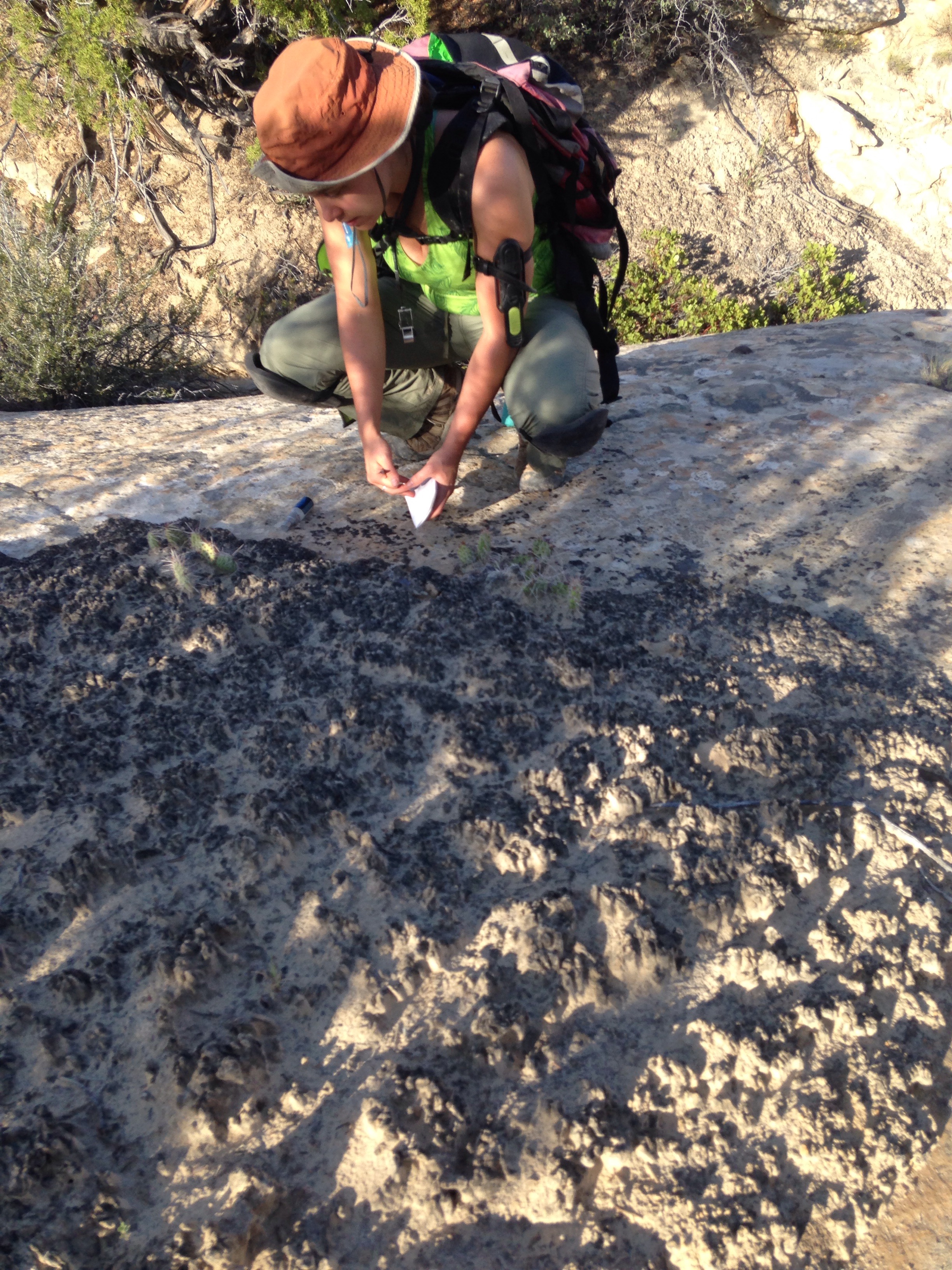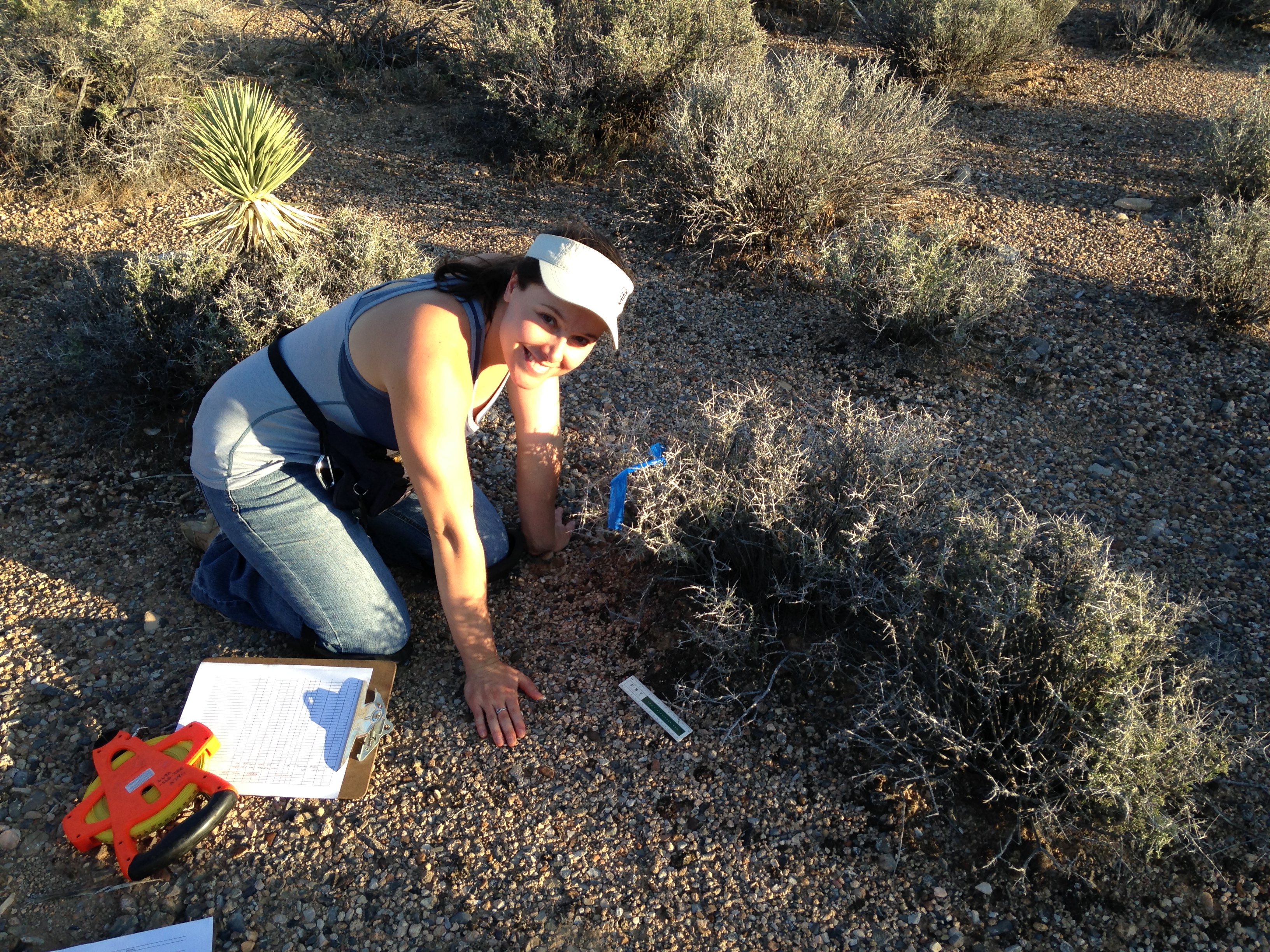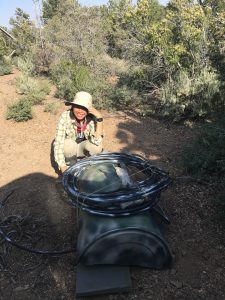Doctoral Student, UNLV
For the Dimensions Project, I’m coordinating many of the outreach activities and assisting with ecophysiological experiments in the Stark Lab.
For my dissertation, I’m studying the protective capacity of microhabitats to buffer Syntrichia caninervis cushions from climatic extremes in today’s environment. I’m using a suite of environmental sensors to monitor fluctuations in micro-temperature, humidity, photosynthetically active radiation, soil moisture, and dew adjacent to the mosses at three ecosystems in the Mojave Desert.
An ultimate test of the ecological significance of the microhabitat buffer I observe will be looking to predict moss physiological stress response and hydration period with prior microclimate exposure. Local climate stations (NevCAN Ecological Gradient) at my field sites will allow for accurately quantifying the climate buffer!

My work will have implications regarding how mosses may be able to “hide” from the brunt of climate change in their buffered homes, which I predict will experience lower variation and fewer extremes in the factors of desiccation which can lead to death even in this hardy species of Syntrichia.
I’m also working on a bryophyte (mosses and their relatives) flora for Grand Staircase Escalante National Monument, located in southern Utah. Here I’m hunting for moss diversity hot-spots, which often include large cushions of Syntrichia.
I hypothesize that such dry land “moss-meccas” will be largely predicted by soil type and topographical shading, as the monument is filled with many rolling hills and tall canyon walls.
Student Assistants
Carmen Lee & Alexander Russel
Contact
clarkt1@unlv.nevada.edu
Publications
Clark, T.A. 2012. Bryophyte floristics and ecology in Grand Canyon National Park. Natural Resource Technical Report NPS/SCPN/NRTR—2012. National Park Service, Fort Collins, Colorado. DOI. PDF.
Tessler, M. & T.A. Clark. 2016. The impact of bouldering on rock-associated vegetation in the Shawangunks, New York. Biological Conservation 204, Part B: 426–433. DOI.
Tessler, M., T.A. Clark, S.W. Cuttingham. 2016. Checklist of the Bryophytes of Mohonk Preserve, New York. Evansia 33(4): 154-164.
Tessler, M, S.W. Cuttingham, & T.A. Clark. 2016. Noteworthy habitat and phylogeny updates for eastern U.S.A. Ulota (Orthotrichaceae). Mitochondrial DNA. DOI.
Brinda, J.C. Stark, L.R., Clark, T.A., & Greenwood, J.L. 2015. Embryos of a moss can be hardened to desiccation tolerance: effects of rate of drying on the timeline of recovery and dehardening in Aloina ambigua (Pottiaceae). Annals of Botany. DOI.
Norris, D.H., E. Kraichak, A. Risk, D. Lucas, N. Phephu, F. Castillo, D. Allard. F. Rosengren, T.A. Clark, N. Fenton, M. Tessler, & E.T. Lennette. 2017. On the Diversity and Richness of Understory Bryophytes at Nectandra Cloud Forest Reserve, Costa Rica. Biodiversity Data Journal 5: e11778 DOI.

